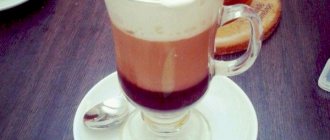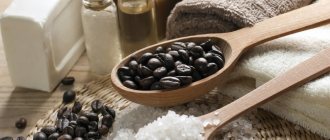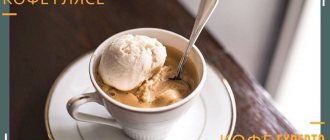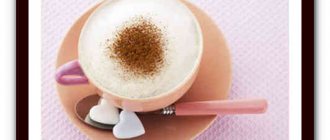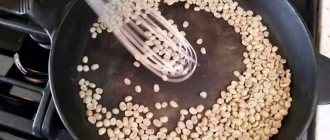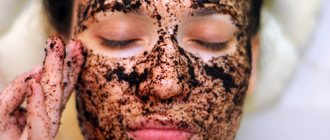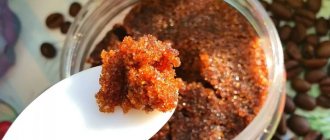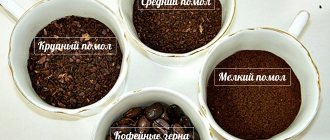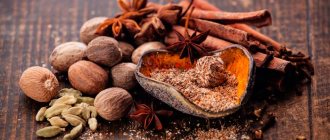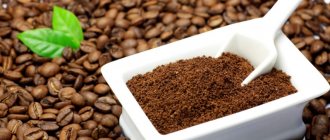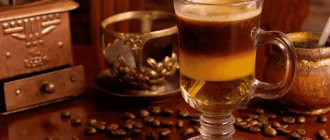There are coffee shops all over the world, but no city is more closely associated with the steaming drink than the Austrian capital. Many famous long-standing coffee shops exude incomparable charm. Countless coffee drinks make every Viennese tourist spoiled for choice. How brown beans came to Vienna is a fascinating and legendary story.
Glass of coffee, photo by Anzhelika Gaidar
History of Viennese coffee
The first coffee houses were built in 1645 in the port cities of London, Hamburg, Marseille, Amsterdam and Venice.
In 1672, Parisians opened their first dedicated pub with a café-bar. However, the Viennese had to wait until 1683 for their coffee.
Legends tell how coffee culture was introduced into the Habsburg residence city: the Turks attacked the Austrian capital and laid siege to the city. But the Sultan's army was defeated at the gates of the metropolis and was forced to flee.
Soldiers of the Habsburg army, who were in Vienna, liberated from the second Turkish siege (1683), discovered several bags with something inside that looked like large grains.
Thinking that they were cheap, the Polish king Giovanni III gave the bags to Franz Georg Kulczycki, who, on the contrary, knew very well that these were precious coffee beans, and thanks to this unexpected gift he opened the first coffee shop in Vienna.
This historical figure is also credited with the invention of Viennese coffee: in fact, to make the coffee less bitter, he decided to add sugar and milk, thereby creating a recipe that still bears the name of this city.
Bags of coffee beans were given to him because he fought bravely on the Austrian side. He also received permission to sell coffee.
Other sources say that it was an Armenian named Deodato who opened the first coffee shop in Vienna in 1685.
Whoever the discoverer was, coffee began an unexpected triumphal march through the Austrian metropolis.
In subsequent years, many coffee shops appeared. In 1819 their number increased to 150, by 1900 there were 600.
Austrian coffee
The color range of the drink varied from the darkest black to milky white.
Viennese women only gained access to the world of coffee shops since 1856.
The Viennese coffeehouse tradition has a special atmosphere. Typical of a Viennese coffee shop are marble tables on which coffee is served, Thonet chairs, boxes, newspaper tables and historicist interior details.
The Austrians say coffee shops are places “where time and space are wasted, but only coffee is paid for.”
The secret to the success of Viennese coffee was the addition of sugar and milk. And because the coffee shop owners did not use ready-made ground beans, but instead roasted it and made their own blends, they proudly called themselves coffee makers. The owners of Viennese coffee shops still call themselves this way.
Vienna Coffee House Club was created in 1956 as a result of the merger of traditional and innovative coffee shops in Vienna. One of his most important tasks is to promote cultural projects in coffee shops.
In honor of coffee, coffee shop owners and coffee suppliers organize a “Coffee Ball” - Ball der Wiener Kaffeesieder, which has been held annually since 1957 in February.
At the beginning of October, the beloved Coffee Festival is held in the Austrian capital.
Vienna is a city with a rich history, including one associated with coffee and its coffee shops: in fact, since 2011, Vienna's coffee shop culture has been recognized by UNESCO as an intangible cultural heritage of humanity.
History of Viennese coffee
More than 300 years have passed since the inhabitants of Vienna, liberated from the Turks, tried the black bitter drink. The history of the appearance of the famous Viennese coffee is very colorful and unusual and is associated with the name of an ordinary resident of Vienna with Polish roots, Yuri Kulchitsky.
Being a Polish nobleman, he fought for his country against the troops of the Ottoman Empire, was captured, where in a few years he was able to learn Turkish and fall in love with coffee. When a ransom was received for him, Kulchitsky settled in Vienna and began to engage in trade. Soon Austria also came under the warlike gaze of the Turkish Sultan; the capital found itself under a multi-day siege.
It was then that Kulchytsky, who ideally knew the Turkish language and manners, offered his help to the city. Dressed in Turkish dress, he bypassed the siege and delivered a letter for help to the Polish and Swedish kings. Help came quickly and Vienna was liberated. As a reward, Yuri Kulchitsky received a large sum of money, a house in a wealthy area and tax exemption. When asked which of the Turkish trophies he would like to keep for himself, Kulchytsky confidently pointed to numerous bags of coffee beans.
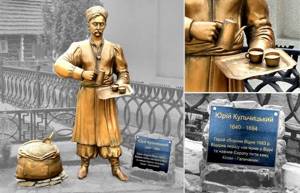
Monument in Vienna to the founder of coffee culture Yuri Kulchitsky
Soon the first coffee shop in Vienna began operating in the new building, and its owner himself, in a Turkish dress, carried the aromatic drink around the city. But the Viennese were in no hurry to try the black and bitter drink.
Then, after experimenting a little, Kulchitsky will offer his own cooking option. It was Viennese coffee with sugar and milk. A portion of this drink was complemented by a fresh bagel, reminiscent of the crescent moon depicted on the Turkish flag.
So, in just 1 year, a native of the small Polish gentry was able to establish a new business for Austria, and soon headed the guild of coffee traders. From that time on, and the approximate date is 1684, every Austrian began breakfast with a cup of aromatic coffee and a bagel. There is still a Kulczycki café in Vienna, and on one of the streets of the city there is a full-length statue of the enterprising liberator, dressed in a Turkish costume and holding a tray of coffee in his hand.
Classic Viennese coffee recipe
You don't need many ingredients to make Viennese coffee, but each one must be prepared perfectly.
One false myth that we must immediately dispel is about coffee: many people believe that this drink only requires a single espresso, but in fact the original recipe requires a double espresso.
Ingredients:
- 0.49 ounces ground coffee
- 1.06 ounces fresh liquid cream
- Low Fat Cocoa Powder
- 1 butter cookie
Cooking method:
Here we show you three simple but fundamental steps to prepare Viennese coffee:
- Prepare two cups of espresso in the traditional way directly in the serving cup (cappuccino cup).
- Froth the milk and carefully place it on the surface of the double espresso.
- Finish your beautiful “arrangement” with a light dusting of low-fat cocoa powder and butter cookies before serving.
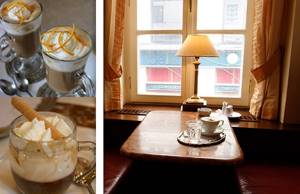
Viennese coffee
Classic recipe
To prepare a classic Viennese coffee recipe, you don’t need to be a professional barista either. To implement your plan, you need to take:
- 25–35 grams of ground beans;
- 235 milliliters of water, preferably filtered;
- 115 milliliters milk or very thick cream.
Cooking time is approximately 25–30 minutes. It is cooked directly in the Turk. You can also use a machine, but in a Turkish drink the drink acquires a special taste and aroma. Infuse the drink prepared in Viennese style for 10 minutes.
Viennese coffee or Viennese Coffee
Ingredients:
- 1 cup whipped cream
- 1 teaspoon powdered sugar
- 1 bar (3 ounces) dark or semisweet chocolate
- 3 cups of strong, freshly brewed, hot coffee
- 1/4 cup creamed cocoa or Irish cream (optional)
Cooking method:
Cool bowl, beaters and cream before whipping. Place 2/3 cup cream and sugar in a chilled bowl. Beat with a mixer at high speed until soft peaks form.
Cover and store in the refrigerator for up to 8 hours. If the mixture has separated slightly after cooling, whisk lightly before using.
Prepare chocolate chips for garnish using a paring knife. Crush some of the chocolate into pieces.
Place remaining 1/3 cup cream in a small heavy saucepan. Bring to a boil over medium heat. Add chocolate chips; Cover with a lid and remove from heat. Let stand 5 minutes or until chocolate has melted; stir until smooth.
Add hot coffee to chocolate mixture. Heat over low heat until bubbles form around the edge of the pan and the coffee is heated, stirring frequently. Remove from heat; stir the cream into the cocoa if you like.
Pour into 4 warmed mugs. Decorate the top with whipped cream and chocolate chips.
Black gold of Austria
The Viennese like to call their coffee black gold and want to be treated as such.
We present 5 recipes for true classics of Viennese coffee.
You can use them to develop your imagination for other different options.
Big or Small black (mocha)
großer Schwarzer (“großer Schwarzer” or “big black”, also known as großer Mokka, big Black/Mocha) – double mocha in a large cup.
kleiner Schwarzer (kleiner Schwarzer or “little black”, also known as kleiner Mokka, small Black/Mocha) – a simple mocha in a small cup.
The basis and therefore the most important basic structure for real Viennese coffee drinks. This is black coffee, i.e. without sugar and milk. Currently it is prepared using an espresso machine. However, if you want to enjoy it the traditional way, you should use a Karlsbader pitcher.
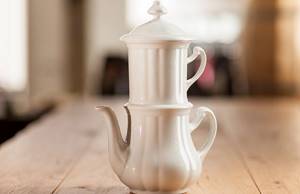
Karlsbader jug
Ingredients for 1 cup:
- up to 8 grams of ground coffee
- tamper weight:
- from -15 to 20 kg
- preparation time: -20 to 30 seconds
Viennese melange
Viennese melange
It is called the “Holy Grail” of Viennese coffees. Consists of mocha with warm milk, a little water and a milk foam hood. If you prefer to add whipped cream instead, the melange will turn into "Franciscan coffee".
Take medium roast coffee beans and milk with 2.5–3.2% fat content.
Ingredients:
- 50 ml coffee;
- 50 ml milk;
- 1 tsp. Sahara;
- cream, sugar, honey, cinnamon, cocoa powder, grated chocolate - to taste.
Cooking method:
- Brew coffee. Sweeten the coffee if desired.
- Whisk the milk. Pour coffee and milk into a heated cup or glass.
- Sprinkle the surface of the drink with cinnamon, cocoa powder or grated chocolate.
Zarenkaffee (Royal Coffee)
Royal coffee
Zarenkaffee (Royal coffee) - strong espresso under a cap of yolk whipped with sugar.
Perhaps the most unusual coffee feature on our list is the strong espresso, which is topped with a whipped and sweetened egg yolk shortly before serving.
Single horse
Cappuccino served with powdered sugar takes its name from a one-horse cart.
Einspänner - “Einspänner”. In the old days, a cart drawn by one horse was called that. It is not clear why, but coffee was also later called, which is a double espresso (but also mocha) with a lot of whipped cream, and cocoa on top of it. It is served in large transparent glasses.
Or there is such an explanation for the name of the drink: that is, it means “coachman”, so named because of the coachmen’s love for such coffee: they held the glass in one hand, the reins in the other, and the coffee remained hot for a long time under the thick cream.
Maria Theresia or Maria Teresa coffee
Maria Theresia coffee
The Empress of Viennese coffee is made from a large mocha with a dash of powdered sugar and whipped cream with orange zest.
It's a mocha with orange liqueur, whipped cream and colorful powdered sugar. The drink is named after the Austrian Empress Maria Theresa; she preferred coffee prepared according to this recipe.
Fiaker or fiacre
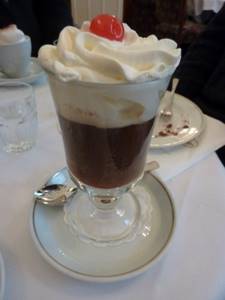
Fiaker is a large mocha in a glass with a lot of sugar and the addition of plum brandy or rum.
If you want to enjoy a shot of coffee, you should choose a fiaker. It consists of a large mocha with lots of sugar, 2ml butter or rum and a cherry on top.
Nuances when choosing ingredients
To brew delicious coffee, it is not enough to find a successful recipe. It is necessary to select the best ingredients for the drink, and coffee beans play the most important role in this. It is important to consider several factors that affect taste:
- variety;
- country of origin;
- manufacturer;
- appearance;
- roasting
There are three types of coffee: Robusta, Arabica and Liberica. In our country, only the first two types are usually found on sale. Robusta is characterized by strong bitterness, sharpness and richness due to its high caffeine content. Arabica is sweeter, with subtle chocolate notes and a characteristic viscosity. Due to the fact that it is assembled by hand, its cost is much higher. Also, these varieties differ from each other in the size of the grains; Arabica has larger grains, 6-8 mm, while Robusta is somewhat smaller, up to 5 mm.
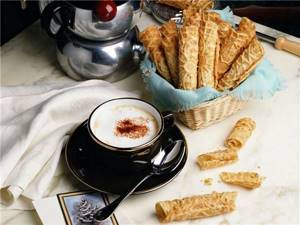
Depending on the country in which coffee is grown, its taste can vary significantly.
- Brazil - pronounced astringency and nutty aroma;
- Colombia - characteristic sourness and velvety taste of the drink;
- Guatemala - a hint of spice and a floral aftertaste;
- Kenya - berry notes combined with light sourness;
- Ethiopia - berry flavor, but more pronounced bitterness;
- India - bright chocolate taste.
The appearance of coffee beans can tell a lot to a knowledgeable person. To be able to evaluate them, it is preferable to purchase them in bulk rather than in ready-made packages. It is necessary to ensure that all grains are dry, free of any damage, small scratches or chips, and approximately the same in size. They should not shine, as this means that the valuable essential oils, which provide both the taste and aroma of coffee, have been oxidized by oxygen.
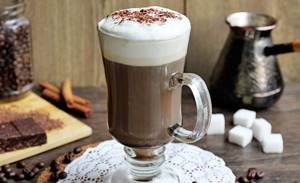
It is also worth paying special attention to roasting the beans. The taste of the future drink largely depends on it.
- Light, or Scandinavian, guarantees softness and tenderness. This drink is great to drink in the morning without adding milk or cream.
- Viennese roasting of coffee imparts a subtle sweetness and rich aroma, pairing well with almost any ingredient.
- Strong French makes the drink slightly bitter, rich and velvety.
- Italian roasting gives the most expressiveness, astringency and dark shade. This coffee is perfect for the middle of the day.
You might be interested in Coffee “Grasshopper”
When purchasing coffee beans, you can focus on the most well-known and reputable companies. Preference should be given to manufacturers from Germany, Finland, Switzerland and Italy. Among all European brands, the oldest and most reputable is Viennese coffee Julius Meinl.
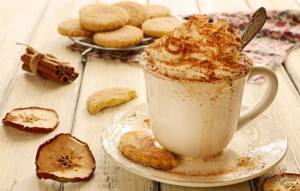
Modern types of Viennese coffee or other recipes
In Austria, there are currently, according to various sources, more than 60 different variations of coffee. Starting from Kulchitsky’s oldest recipe “Wiener Melange” and ending with the newfangled delights of modern Viennese baristas.
Kaisermelange (Imperial melange)
Imperial melange is mocha with egg yolk, honey and cognac.
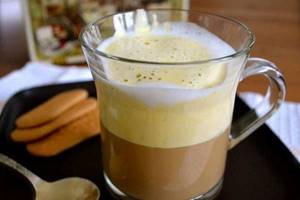
Imperial melange
Ingredients:
- 50 ml coffee;
- 50 ml milk;
- 10–15 ml cognac;
- 1 chicken egg yolk;
- sugar or honey - to taste (2 tsp).
Cooking method:
- Beat the yolk with half the sugar or honey.
- Brew coffee, sweeten it.
- Add cognac to coffee.
- Whisk the milk.
- Pour coffee and milk into a glass.
- Gently place the beaten yolk on top.
Viennese coffee with powdered sugar and cream
You need 70 ml of cream with 1.5 tbsp. l. powdered sugar and a pinch of vanillin to 120-150 ml of coffee.
Another preparation method is to combine fresh coffee drink, heavy cream, dark or bitter chocolate in the amount of 50 grams, and powdered sugar, which requires about 100 grams.
Viennese coffee with spices
1-2 tsp. ground grains, 30 ml cream, allspice peas, cloves, half a cinnamon stick.
Viennese coffee can also be prepared with grated orange zest and nutmeg. The ingredients are added to the coffee during the brewing process. This way the spices will give off all their taste and aroma. The finished drink is covered with milk foam.
Viennese coffee with syrup
•ground coffee – 6 teaspoons, water – 2/3 cup, sugar – 1 teaspoon, cream – 150 ml,
•powdered sugar - 3 teaspoons, chocolate syrup - to taste, cocoa - to taste.
Coffee with chicory
- For 1 cup of coffee, chicory – 2 g; granulated sugar – 2 tsp; cream – 50 g; powdered sugar – 1 tsp.
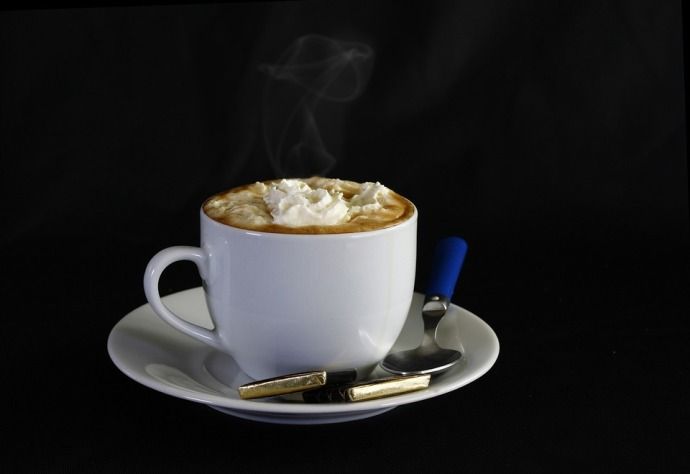
Viennese coffee
Coffee with chocolate
- For 500 ml of strong coffee, whipped cream - 150 ml; granulated sugar - 5 g; chocolate – 100 g; liquid cream – 50 ml;
Coffee with cocoa
- ground coffee – 6 tsp; granulated sugar - 1 tsp; cream - 150 ml; chocolate syrup - to taste;
- cocoa powder; powdered sugar.
Viennese coffee with alcohol
The ingredients are the same as in the main recipe, plus 10 ml of cognac or rum. Brewed coffee is mixed with alcoholic drink, then decorated with a layer of cream. You cannot mix cream with alcohol: it may curdle.
With lemon zest
Almost every Viennese coffee shop offers its visitors a drink that contains the following ingredients:
10% cream – 0.5 l; grains – 60 g; chocolate – 100 g; lemon – half; cream container; cream liqueur – 100 ml.
- Remove the zest from the lemon using a grater.
- Pour cream and liqueur into a container. When the mixture is hot, add the chocolate and zest, bring to a boil and remove from heat.
- Grind the grains and cook.
- Crumble the creamy chocolate in a blender.
- Pour liquid into warm cups, add chocolate, garnish with whipped cream.
With orange zest
ground coffee beans – 4 tsp; water – 300 ml; sugar – 4 tsp; grated orange zest – 1 tsp;
fresh heavy cream – 200 ml; orange liqueur – 50 ml.
- Thoroughly whip the cream with sugar and orange zest and refrigerate for half an hour. There they will become thicker.
- Boil the ground grains, add liqueur, pour into warm glasses or cups. Carefully place the creamy foam on top. You can decorate with orange zest, nuts, and cinnamon.
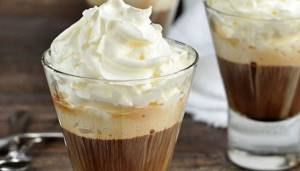
Viennese coffee
Historical legend about coffee
It would be strange if the Austrians, so passionate about fragrant coffee, did not come up with many legends and traditions about the appearance of coffee in Vienna.
One of them says that in 1683, Austria waged a war with the Ottomans and Mustafa Selim’s army of thousands kept the city under siege, but the Polish army that came to the rescue defeated the Turkish army and drove them far beyond the country’s borders. Those who fled in their haste left behind half a thousand bags of small brown grains previously unseen by Europeans.
At first, the Austrians thought that this was some kind of unusual food for horses, but the horses did not try it. The arriving merchants from Armenia explained that this was a new unusual drink from the East and taught the Europeans how to prepare it.
As we have already said, the Arabs and Turks drank only strong black coffee with spices, so the Austrians probably rightfully consider sweet coffee with milk their invention.
Although many Austrian coffee shops will offer you a cup of Turkish coffee with a glass of ice-cold Alpine water, combining the two will create an amazing experience and open up a new taste of coffee.
How to serve coffee in Viennese style
For such a sophisticated drink, of course, there are its own rules for design and serving. It is customary to drink Viennese coffee in small sips, enjoying the aroma.
Melange coffee can be served in large tea cups or using a tall glass glass. Often, it is consumed through a straw, thereby mixing the taste of the drink itself and the cream. A large number of cooking options will allow you to choose the ideal option for any gourmet.
How to drink coffee the Viennese way
You can enjoy the drink as you please, there are no special rules. But there are some observations:
- If the cream or egg foam is very thick, sprinkled with nuts or chocolate, some people like to eat it with a spoon and then wash it down with coffee. It turns out to be a kind of dessert, two in one, but some of the cream will still dissolve, so it will be a bit like a milkshake.
- You can eat the foam with a spoon and at the same time sip the coffee base through a straw.
- If the cream is whipped in the classic way, that is, not completely, it can be drunk. This is much tastier, since there is a mixing of cold and hot, thick and liquid.
You can read the list of the 40 most popular types of coffee that can be ordered in Austrian coffee shops at the link: https://kitchen.727go.com/austrian-coffee/.
Post Views: 824
